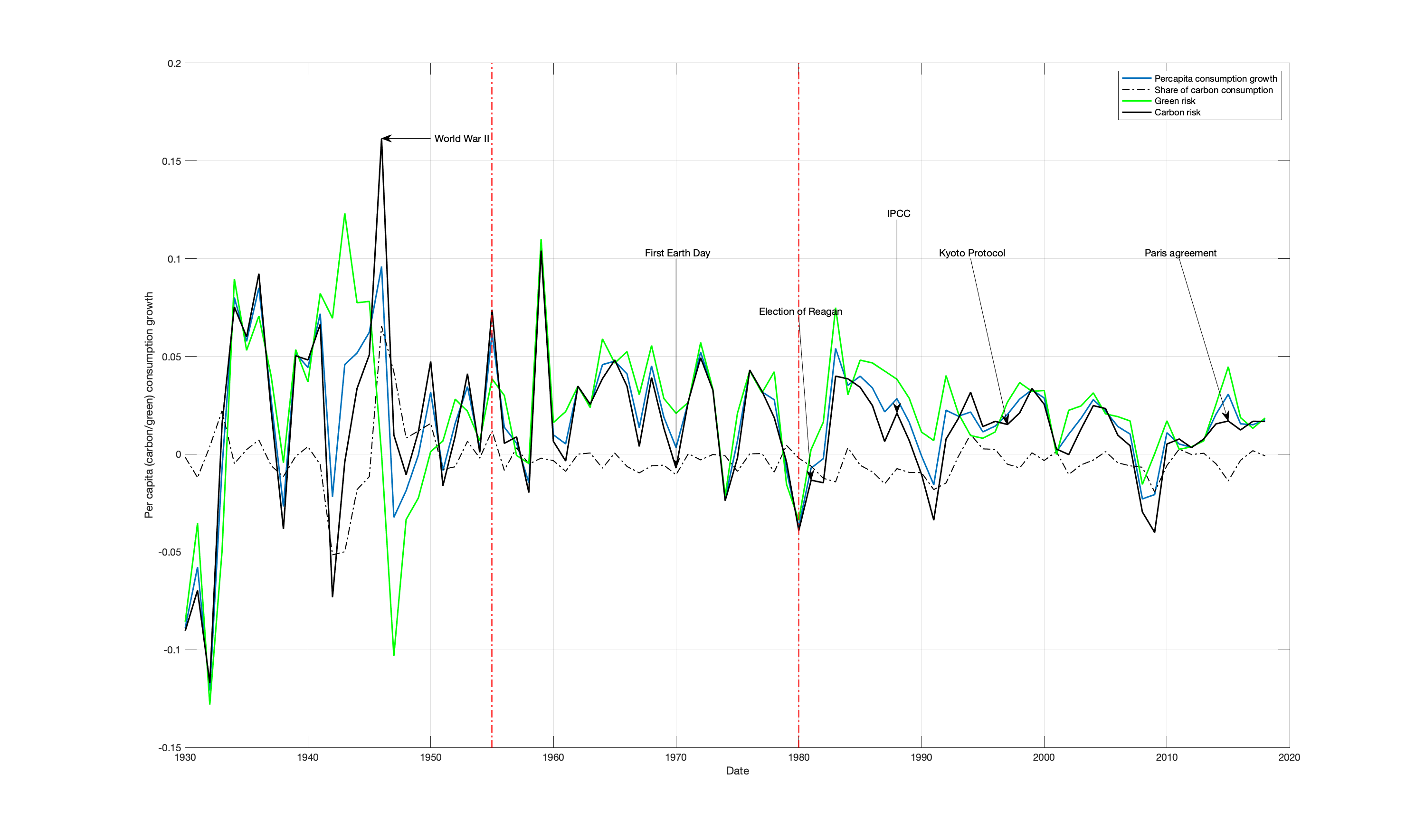JMP - Long run carbon consumption risks and asset prices
Working paper, 2021
Motivation
- FIRST
- Environnemental issues
- Consumption of goods and services pollutes the environnement ;
- Production vs. consumption-based CO2 emissions (GCP). Fact
- Despite that, most papers and climate policies focus on the production side.
- SECOND
- Climate change is a long horizon phenomenon ;
- Need a long-run risk model to assess it ;
- Yet, the effect of the canonical long-run risks on the assets depends on investors detecting it ;
- Require a new LRR model by considering carbon emissions consumption.
- However, emission does have long-run risk and is more detectable :
- Curbing carbon emissions at the pre-industrial level ;
- Emission $\rightarrow$ Damages $\rightarrow$ affects aggregate consumption.
Data

Model
Long-run carbon consumption risks model
- Consumption growth decomposition :
- Carbon consumption growth dynamic :
- Conditional expectation of carbon consumption growth dynamic :
- Conditional volatilty of carbon consumption growth dynamic :
- Share of carbon consumption out of total consumption growth dynamic :
- Dividend of any asset i growth dynamic :
Where $\epsilon_{x, t+1}, \epsilon_{cc, t+1}, \epsilon_{\alpha, t+1}, \epsilon_{i, t+1}$ and $\epsilon_{\sigma, t+1}$ are i.i.d.
Findings
- LRCCR model replicates the equity premium, volatility and risk-free rate much better than LRR :
- By decomposing consumption growth into two components ;
- Long-run risks in both expected carbon consumption and volatility.
- My LRCCR model increases the capacity to detect the long-run risk during the period 1956-2018. But during the period 1930 - 1955, it was less dectectable :
- Investors can profit from it using climate change news ;
- The long-run risk variable $x_t$ and its conditional variance $\sigma _t ^2$ help improving the predictability of the equity premium and the consumption growth.
